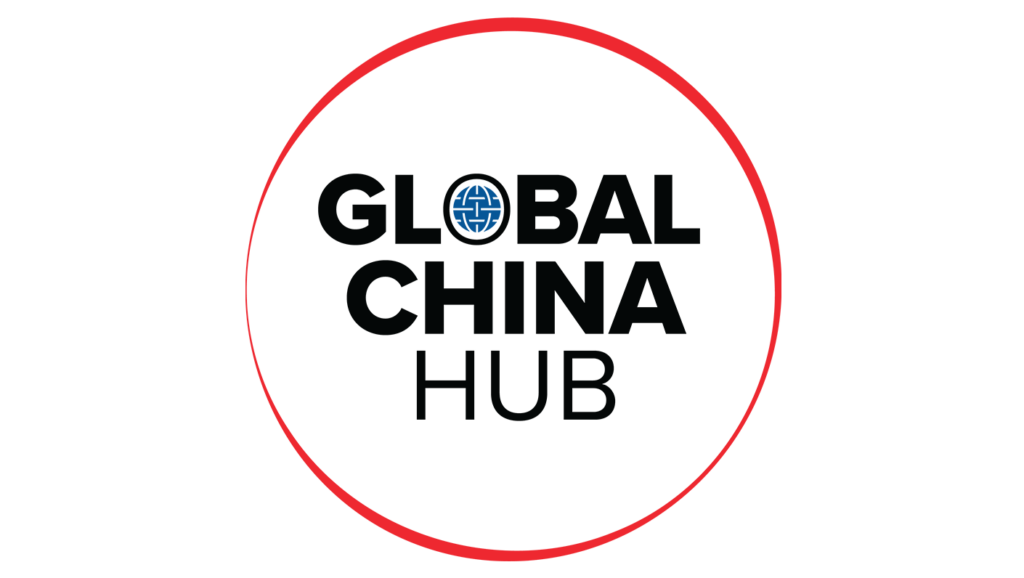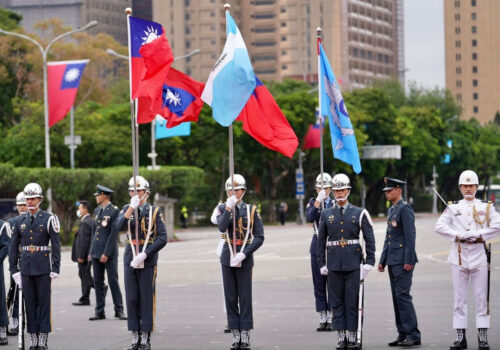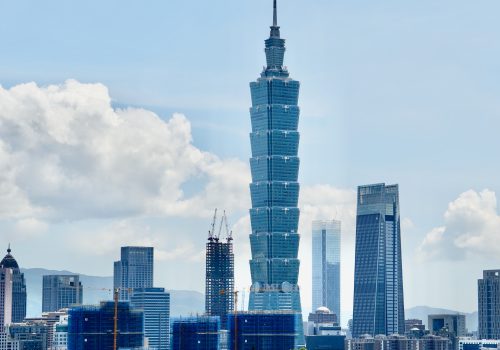Surfing the Hallyu: What Taiwan can learn from South Korea’s cultural diplomacy
Bottom lines up front
- South Korea’s Hallyu model shows how sustained cultural investment can translate into international influence, economic growth, and political capital—especially among younger audiences.
- Taiwan’s limited global cultural footprint, particularly among younger generations in key partner countries, poses a long-term risk to sustained foreign support and international legitimacy.
- Policymakers should prioritize cultural diplomacy as a strategic asset—investing in cohesive branding, youth-oriented outreach, and local partnerships to secure Taiwan’s global position in the face of rising geopolitical pressure.
Summary
Cultural diplomacy is among the most powerful tools of soft power. Since the Cold War, the United States has invested billions in spreading its cultural influence—using icons from Louis Armstrong to Duke Ellington, often broadcast via Voice of America across Europe, Asia, and beyond. More recently, South Korea developed a comprehensive global cultural strategy—known as Hallyu, or the Korean Wave—which has integrated music, television, and film into a cohesive brand, elevating Korea’s international goodwill, visibility, and recognition.
Taiwan, a vibrant democracy and global technology leader with a rich cultural heritage, has struggled to achieve similar resonance, particularly among younger demographics in the United States. As Taiwan faces a shrinking pool of formal diplomatic partners and a generational decline in awareness abroad, its leaders could draw valuable lessons from South Korea’s success. Expanded cultural diplomacy is not merely possible—it is essential for Taiwan’s long-term engagement with the world.
Introduction
Taiwan, officially the Republic of China, is a dynamic democracy in East Asia with a cultural history shaped by Chinese, Japanese, and Indigenous influences. Despite its achievements in technology and its vibrant society, global understanding of Taiwan—especially beyond policymakers in the United States and its dozen official diplomatic allies—remains limited.
The good news is that public support for Taiwan in the United States is strong. A 2025 survey showed that 68 percent of Americans view Taiwan favorably, while 77 percent hold unfavorable views of China. However, only 34 percent of Americans could correctly identify Taiwan on a map, and just 15 percent reported being “very familiar” with cross-strait issues. Notably, awareness skews older: In a 2024 survey, 77 percent of Americans aged sixty-five and up considered Taiwan-China tensions personally important, compared to only 40 percent of those aged eighteen to twenty-nine—a thirty-seven-point generational gap.
This growing divide raises serious implications. If US support were ever required in a cross-strait crisis, younger Americans’ lack of familiarity could undermine public backing. This risk is highlighted by declining US support for Ukraine: Those viewing Russia as an enemy peaked at 70 percent in March 2022—and fell to 50 percent by March 2025.
To build sustained global support, Taiwan might lean into cultural diplomacy, a tool successfully employed by the United States in the battle for hearts and minds during the Cold War. American cultural diplomacy, led by institutions like the United States Information Agency, aimed to counter Soviet influence by promoting democratic ideals, freedom of expression, and American cultural values. Through jazz tours featuring artists like Louis Armstrong and Duke Ellington, as well as the international circulation of American films, books, and exhibitions, the United States sought to present a compelling image of its open society.1Nicholas J. Cull, The Cold War and the United States Information Agency: American Propaganda and Public Diplomacy, 1945–1989 (Cambridge: Cambridge University Press, 2008), 67–85. Radio broadcasts like Voice of America disseminated news, music, and pro-democracy content to millions behind the Iron Curtain, shaping a narrative of American cultural leadership and liberal modernity.2Richard T. Arndt, The First Resort of Kings: American Cultural Diplomacy in the Twentieth Century (Dulles, VA: Potomac Books, 2005), 211–230.
More recently, the Republic of South Korea has made cultural diplomacy a national priority, turning K-pop, K-dramas, cinema, beauty, and cuisine into vehicles for strategic influence. These efforts have made South Korea instantly recognizable and admired by younger generations worldwide.
By adopting a similar model, Taiwan can reinvigorate its cultural diplomacy, increase awareness among younger global audiences, and bolster its sovereign identity on the world stage.
South Korea’s Hallyu model
Following the 1997 Asian Financial Crisis, South Korea identified cultural exports as a new engine for economic and soft power growth. President Kim Dae-jung’s administration launched the “Hallyu Industry Support Development Plan,” boosting the cultural budget from $14 million in 1998 to $84 million in 2001, and promoting public-private partnerships in entertainment. Over the decades, the South Korean government allocated robust budgets for culture, consistently spending between 1.4 percent and 1.6 percent of its federal budget on cultural issues, which, in South Korea include sports and tourism. In recent year, this budget has grown in nominal terms: On a per capita basis, South Korea’s culture spending increased from $145 in 2021 to $166 by 2024.
In 1999, South Korea passed a Basic Law for the Promotion of Cultural Industries and established the Korea Creative Content Agency (KOCCA) to fund and support Korean content. In 2001, the Ministry of Culture, Sports and Tourism was created, expanding investments in talent development, infrastructure, and international promotion.
KOCCA subsidized record companies, festivals, overseas tours, and international music expos—laying the groundwork for the global rise of K-pop. Similar investments supported cinema and TV. The Korean Film Council funded coproductions and production support, ultimately helping Korean films like Parasite win global accolades, including the 2020 Academy Award for Best Picture.
South Korea also launched forty-two cultural centers in over thirty countries, offering exhibitions, performances, language classes, and film screenings. More recently, Korean beauty expos have joined the export lineup, supported by embassies and cultural agencies.
Importantly, South Korea’s top political leadership championed these efforts. In 2013, President Park Geun-hye’s “creative economy” policy identified culture as a national growth engine. In 2021, President Moon Jae-in appointed BTS members as presidential envoys for public diplomacy.
By 2023, Hallyu-related exports reached $14 billion—including $7.5 billion in cultural content, $4.1 billion in consumer goods, and $2.4 billion from tourism. Perhaps more importantly, awareness and favorability soared: The share of Americans unfamiliar with Korea dropped from 13 percent in 2001 to just 2 percent by 2018. That year, Gallup recorded a 77 percent US favorability rating for South Korea.
Current state of Taiwan’s cultural diplomacy
While China views Taiwan as a breakaway province, Taiwan operates as a sovereign state with its own government, military, and constitution. This unresolved tension limits Taiwan’s international space and recognition—but not its cultural potential.
Taiwan boasts an impressive cultural portfolio. Directors such as Ang Lee and Hou Hsiao-hsien have garnered international acclaim. Its culinary scene includes Michelin-starred restaurants like Din Tai Fung and popular street foods like bubble tea and xiaochi (“small eats”) from its night markets. Mandopop enjoys regional popularity, though it has yet to achieve global reach.
Taiwan’s cultural diplomacy strategy includes efforts like the Taiwan Academy, founded in 2011, with cultural centers in Los Angeles, New York, Houston, and Paris. In 2012, the Ministry of Culture was created to coordinate cultural policy. Taiwan’s Economic and Cultural Offices (TECO) also sponsor events abroad. In 2021, Taiwan Plus, an English-language streaming and media platform, was launched with government backing, modeled after South Korea’s Arirang TV.
Taiwan’s cultural budget has only marginally increased to 1.09 percent of the total central government budget in 2024 from 1.01 percent in 2020. In terms of official exchange rates, Taiwan’s per capita culture ministry spending rose modestly to NT$1,088 (about US$37) in 2024 from NT$976 in 2020.
Other efforts include participation in book fairs, translation subsidies, and support for Taiwanese literature and cinema. Yet despite this progress, Taiwan’s global cultural footprint remains modest—especially among youth audiences.
Strategies to elevate Taiwanese culture globally
Taiwan can enhance its cultural diplomacy by adopting strategies modeled on South Korea’s experience, with a focus on younger demographics and unified branding.
1. Unified branding: The “Formosa flow”
Taiwan should create a cohesive cultural brand akin to Hallyu. A campaign titled “Formosa flow” could unify arts, food, technology, music, and democratic values under a single narrative. Themes could include digital innovation, Indigenous culture, LGBTQ+ rights, and environmental sustainability—distinguishing Taiwan in the global imagination.
2. Youth engagement: TikTok Taiwan
Taiwan must adopt a digital-first approach. Taiwan Academies should partner with YouTubers, TikTok creators, podcasters, and influencers to cocreate content. Virtual concerts, e-sports collaborations, and interactive media festivals could help Taiwan connect with younger audiences—particularly in the United States and Latin America, home to most of Taiwan’s diplomatic partners.
3. Youth engagement: “Bubbles on campus”
While popular all-over Southeast Asia, night markets represent a unique opportunity for Taiwan to connect with young audiences in the United States. TECO and Taiwan Academies could identify youth engagement nodes in college towns and neighborhoods with large young populations and set up monthly night markets to promote Taiwanese culture to US college towns through monthly pop-ups featuring street food, art, and music. Bubble tea, invented in Taiwan in 1986, could serve as the flagship attraction—offering cultural engagement in a handheld, tasty format.
4. Expand the Taiwan Academy network
Taiwan Academies currently offer language instruction, scholarships, and film screenings. Expanding their scope to include cuisine, fashion, and digital media—modeled after South Korea’s cultural centers—could increase cultural reach and relevance among younger global audiences. Initiatives such as the Taiwan Cultural Center in Tokyo, participation in international art fairs, and collaborations with foreign cultural institutions have yielded positive results.
5. Launch and fund a “global Taiwan” campaign
Taiwan should increase its investments in subtitling, translation, and international distribution of its films and TV shows—placing content on platforms like Netflix and YouTube. A strong digital marketing effort across Instagram, TikTok, and other platforms would amplify reach. Additionally, Taiwan should cultivate and promote cultural ambassadors in music, fashion, and cinema. Allocating more money for cultural diplomacy is critical—perhaps a redesignation of cultural diplomacy as a national security tool could help alleviate some of the current interparty budgetary disagreements around funding for cultural diplomacy.
6. Engage local leadership
Local leaders, including mayors and governors of states, are multipliers of soft power and can make the Taiwan-US partnership more tangible and relatable by embedding it in daily civic, cultural, and economic life. Mayors can open night markets, issue city proclamations recognizing Taiwan’s contributions during relevant holidays (e.g., Double Ten Day), host Taiwan-themed festivals, film series, and exhibitions in city-sponsored cultural venues like libraries, parks, or museums. Governors can highlight Taiwan’s role in local economies, especially in sectors where Taiwan is a key trade partner—like semiconductors, electronics, green tech, and medical equipment, and use their social media platforms to elevate Taiwan’s culture in tandem with the deep trade linkages.
Conclusion
Taiwan has a compelling story to tell—one that includes Indigenous culture, technological leadership, digital activism, diverse food culture, and democratic values. By integrating these narratives into globally resonant media and arts, Taiwan can build its own Hallyu with Taiwanese characteristics.
With sustained investment and strategic branding, Taiwan can increase global awareness, deepen international partnerships, and fortify its national identity through cultural diplomacy.
About the author
related content
Explore the program

The Global China Hub tracks Beijing’s actions and their global impacts, assessing China’s rise from multiple angles and identifying emerging China policy challenges. The Hub leverages its network of China experts around the world to generate actionable recommendations for policymakers in Washington and beyond.
Image: Street vendors sell food at the Shilin night market in Taipei July 15, 2008. REUTERS/Nicky Loh




